SOLUTION 1: a.) Here are a carefully labeled sketch of the region, a rough sketch of the resulting Solid of Revolution, and a circular cross-section at $x$ of radius $r$. It is IMPORTANT to mark BOTH $x$ and $r$ in the sketch of the region !!!
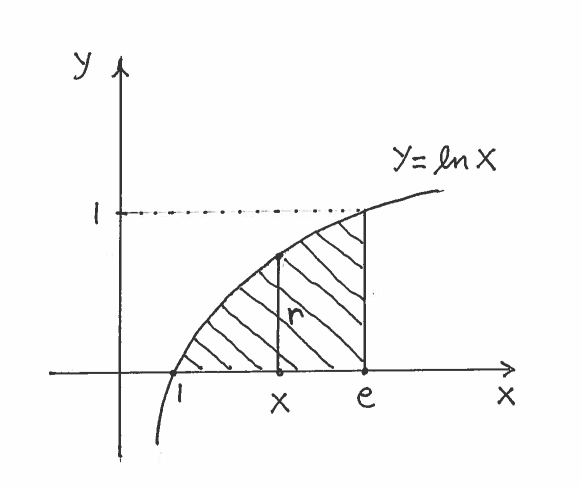 $ \ \ \ $
$ \ \ \ $
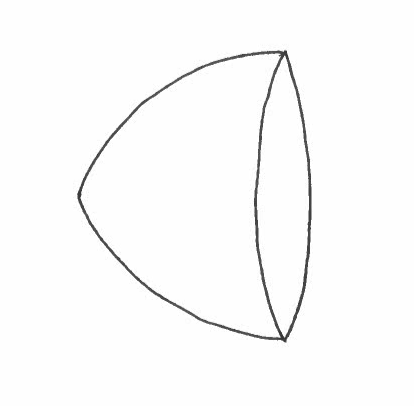 $ \ \ \ $
$ \ \ \ $
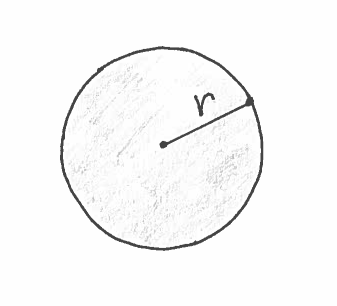
The area of the circular cross-section is
$$ A(x)= \pi r^2 = \pi (\ln x)^2 $$
Thus the total volume of this Solid of Revolution is
$$ Volume = \int_{1}^{e} \pi (\ln x)^2 \ dx $$
SOLUTION 1: b.) Here are a carefully labeled sketch of the region, a rough sketch of the resulting Solid of Revolution, and a circular cross-section at $x$. In this example, the cross section is called an annulus, a circular region of radius $R$ with a smaller concentric circular region of radius $r$ removed. It is IMPORTANT to mark ALL of $x$, $r$, and $R$ in the sketch of the region !!!
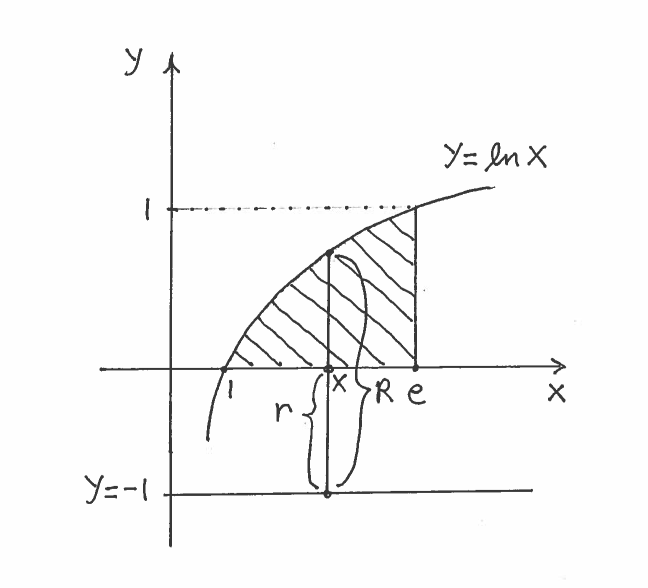 $ \ \ \ $
$ \ \ \ $
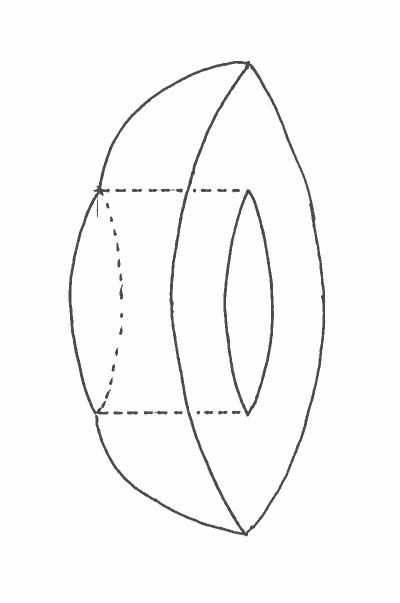 $ \ \ \ $
$ \ \ \ $
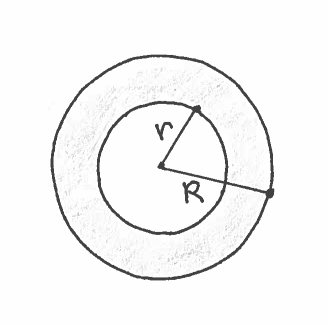
The area of the circular cross-section is
$$ A(x)= \pi R^2 -\pi r^2 = \pi (\ln x - (-1))^2 - \pi (1)^2 = \pi (\ln x +1)^2 - \pi (1)^2 $$
Thus the total volume of this Solid of Revolution is
$$ Volume = \int_{1}^{e} \Big( \pi (\ln x +1)^2 - \pi (1)^2 \Big) \ dx $$
SOLUTION 1: c.) Here are a carefully labeled sketch of the region, a rough sketch of the resulting Solid of Revolution, and a circular cross-section at $x$. In this example, the cross section is called an annulus, a circular region of radius $R$ with a smaller concentric circular region of radius $r$ removed. It is IMPORTANT to mark ALL of $x$, $r$, and $R$ in the sketch of the region !!!
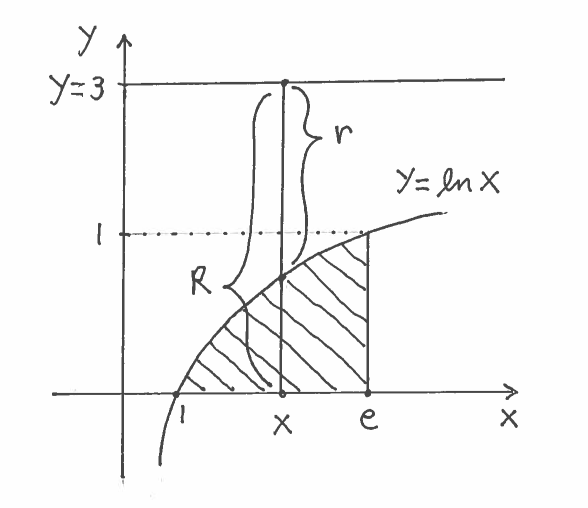 $ \ \ \ $
$ \ \ \ $
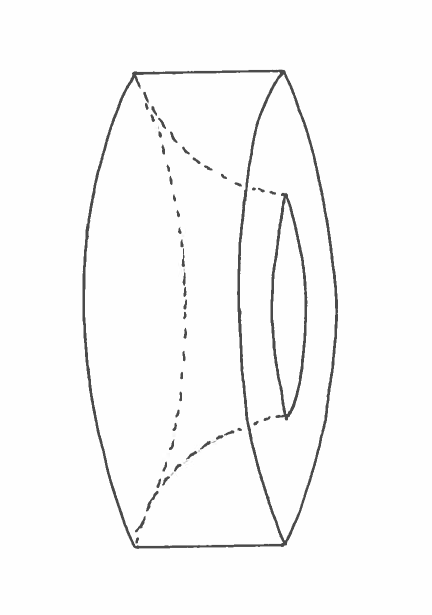 $ \ \ \ $
$ \ \ \ $

The area of the circular cross-section is
$$ A(x)= \pi R^2 -\pi r^2 = \pi (3)^2 - \pi (3-\ln x)^2 $$
Thus the total volume of this Solid of Revolution is
$$ Volume = \int_{1}^{e} \Big( \pi (3)^2 - \pi (3-\ln x)^2 \Big) \ dx $$
Click HERE to return to the list of problems.
 $ \ \ \ $
$ \ \ \ $
 $ \ \ \ $
$ \ \ \ $

 $ \ \ \ $
$ \ \ \ $
 $ \ \ \ $
$ \ \ \ $

 $ \ \ \ $
$ \ \ \ $
 $ \ \ \ $
$ \ \ \ $

 $ \ \ \ $
$ \ \ \ $
 $ \ \ \ $
$ \ \ \ $
